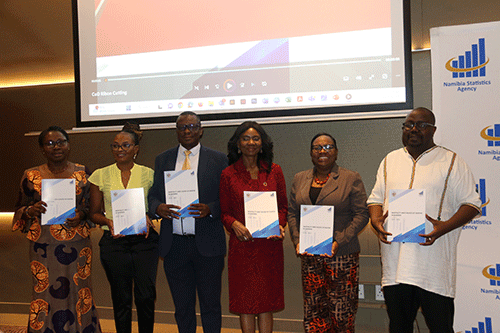Namibia’s death rate has drastically increased over the years, with the leading cause of death in Namibia being hypertensive diseases at 8.8% in 2020, while Covid-19 - at 18.6% - was the leading cause of death in 2021.
This was revealed by the Namibia Statistics Agency during the launch of the second series of the Mortality and Causes of Death Report yesterday.
Statistician general Alex Shimuafeni said diarrhoeal diseases were ranked as the number one leading cause of death for children under five in 2020, constituting 11.9%, and 11.3% in 2021. The leading cause of death for children aged five to 14 in 2020 and 2021 decreased from 13.2% to 11.1%.
“Deaths due to non-communicable diseases now stand at 21.5%, which is a decline from 37.5% in 2018. It highlights the need for an intensified focus on preventing and treating cardiovascular diseases, cancer, diabetes and chronic respiratory diseases, as well as tackling injuries, as set out in the agenda for the UN Sustainable Development Goals,” he stated.
He said this report highlighted some of the key areas that must be improved as data shows that almost half (49%) of deaths that occurred in 2021 had ill-defined causes of death.
“This is attributed to a wrong classification of causes of death by healthcare providers during a manual recording of causes of death. The misclassification is not correct and accurate, as per the 11th International Classification of Diseases. This is a major concern in an era where we are supposed to use an e-death notification system that could improve the quality of this data,” he added.
Shimuafeni noted that an analysis of the causes of death data highlights the number of deaths reported in the Civil Registration system, as well as overall issues of data quality in terms of death certification and reporting.
He stated: “Inaccurate recording of the cause of death compromises the quality and reliability of estimates that can be derived from such data. A high proportion of ill-defined causes of death could be attributed to poor medical certification of cause of death, poor coding of cause of death, age misreporting of deaths, or biases in reporting certain diseases”.
Generally, most deaths in Namibia occur in June, July, August and December, with a consistent pattern across the years 2018 to 2021. In 2021, more deaths (about 25%) were recorded in June and July when the Covid-19 pandemic was at its peak.
More men have died
The executive of demographic and social statistics at the NSA, Paulina Ingo, said more men are recorded to have died during the period under review, compared to their female counterparts. She highlighted that the country is not doing well in the containment of diseases like malaria.
Furthermore, the causes of death are some of the most fundamental metrics for population health. The trends in causes provide an important summary of whether societies are or are not making progress in reducing the burden of premature mortality, and especially avoidable mortality. “Causes of death could also provide direction on how to improve the health system,” Ingo stated.
“The overall finding of this report highlights that deaths increased over the years, and there are high deaths in infants and the elderly (80+ years). More male than female deaths are recorded, and many deaths occurred in the Khomas and Oshana, with the least in the Kavango West and Kunene regions,” she noted.
A significant number of male deaths were also due to self-inflicted injuries. Deaths that occurred in 2020 are 24 117 and of that figure, 12 903 are men.
The World Health Organisation’s officer in charge, Dr Mary Nana Ama Brantuo, said Namibia is one of the countries with a robust civil registration and vital statistics system.
“In Namibia, just like other countries, there’s a growing need for the availability of quality and disaggregated data. This is data collected and published in a timely and coordinated manner, and for greater accessibility to all users,” she observed.
Brantuo added: “Without data, this may hamper their ability to monitor national development plans, as well as continental and international reporting obligations. Let us continue to strengthen it to allow faster tracking of development statistics. For example, this is to monitor data on key reproductive health outcomes such as maternal and newborn deaths, gender disparities or to evaluate how teenage pregnancies are changing in each location.”
She said there is furthermore a need to strengthen collaborative efforts in comprehending and addressing the challenges which are experienced, and to ensure strengthened systems.
Caption (Death report)


